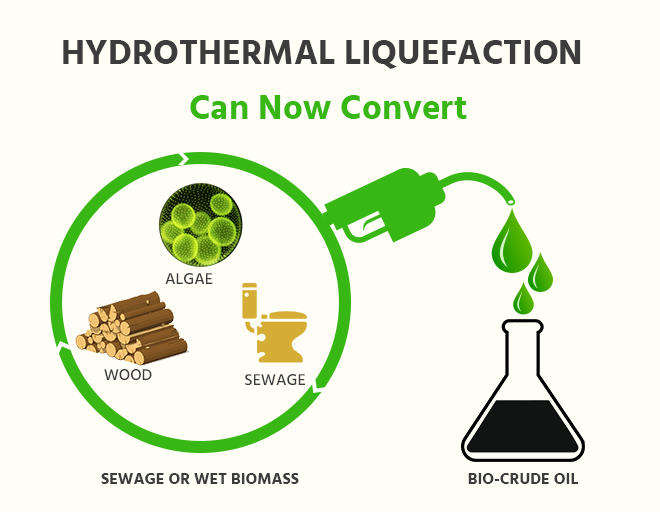Washington: It may sound like science fiction, but wastewater treatment plants may turn ordinary sewage into biocrude oil, thanks to this new research that took place at the US Department of Energy’s Pacific Northwest National Laboratory (PNNL).
“There is plenty of carbon in municipal waste water sludge and interestingly, there are also fats,” says Corinne Drennan, who is responsible for bioenergy technologies research at PNNL, at Richland, in Washington.
“The fats or lipids appear to facilitate the conversion of other materials in the wastewater such as toilet paper, keep the sludge moving through the reactor, and produce a very high quality biocrude that, when refined, yields fuels such as gasoline, diesel and jet fuels,” Drennan noted in an official statement.
The technology is called hydrothermal liquefaction and mimics the geological conditions Earth uses to create crude oil.
Quick Fact: Hydrothermal liquefaction (HTL) is a thermal depolymerization process used to convert wet biomass into crude-like oil which is also referred as bio-oil or biocrude.
This process uses high pressure and temperature to create biocrude oil to within a few minutes. To put this in perspective, the same process would take millions of years to yield this naturally. The biocrude obtained is similar to petroleum pumped out of the ground, with a small amount of water and oxygen mixed in. This biocrude can then be refined using conventional petroleum refining operations. – Researchers Of US Department of Energy’s Pacific Northwest National Laboratory
With this technology, a single person could generate two to three gallons of biocrude per year, according to an estimate by Pacific Northwest National Laboratory.
Sewage, or more specifically sewage sludge, has long been viewed as a poor ingredient for producing biofuel because it’s too wet.
The approach being studied by PNNL eliminates the need for drying required in a majority of current thermal technologies which historically has made wastewater to fuel conversion too energy intensive and expensive.
Hydrothermal liquefaction may also be used to make fuel from other types of wet organic feedstock, such as agricultural waste, according to the researchers.
Using hydrothermal liquefaction, organic matter such as human waste can be broken down to simpler chemical compounds.
The material is pressurised to 3,000 pounds per square inch – nearly one hundred times that of a car tire. Pressurized sludge then goes into a reactor system operating at about 660 degrees Fahrenheit.
The heat and pressure cause the cells of the waste material to break down into different fractions -biocrude and an aqueous liquid phase, the researchers explained.
In addition to producing useful fuel, the technology could give local governments significant cost savings by virtually eliminating the need for sewage residuals processing, transport and disposal.






























Steve
March 23, 2018 at 5:18 pm
This is a great process. I have read several articles in Discover Magazine called “Anything to Oil” which highlight a thermal depolymerization process which was started in 2003 in Philadelphia on a small scale and later a commercial plant in Missouri which converted multiple waste streams to oil. However, their production costs were approximately $80 a barrel of oil made and at that time they were losing roughly $40 a barrel. Inefficient as it was I think it is great that PNNL is still researching this process that previously was too costly to make an impact.
RK
July 5, 2020 at 8:35 pm
finally we have a hope for ICE vehicles. they are not going to be banned for complete evs which are actually polluting and using non renewable materials.
the only work is to simulate the engines using modern softwares to make them more efficient and eco friendly. we can also blend ethanol with bio gasoline/diesel